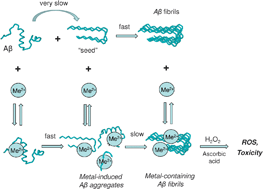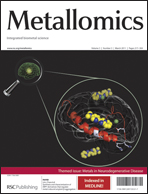Interactions of Zn(ii) and Cu(ii) ions with Alzheimer's amyloid-beta peptide. Metal ion binding, contribution to fibrillization and toxicity†
Abstract

- This article is part of the themed collection: Metals in Neurodegenerative Disease

 Please wait while we load your content...
Please wait while we load your content...